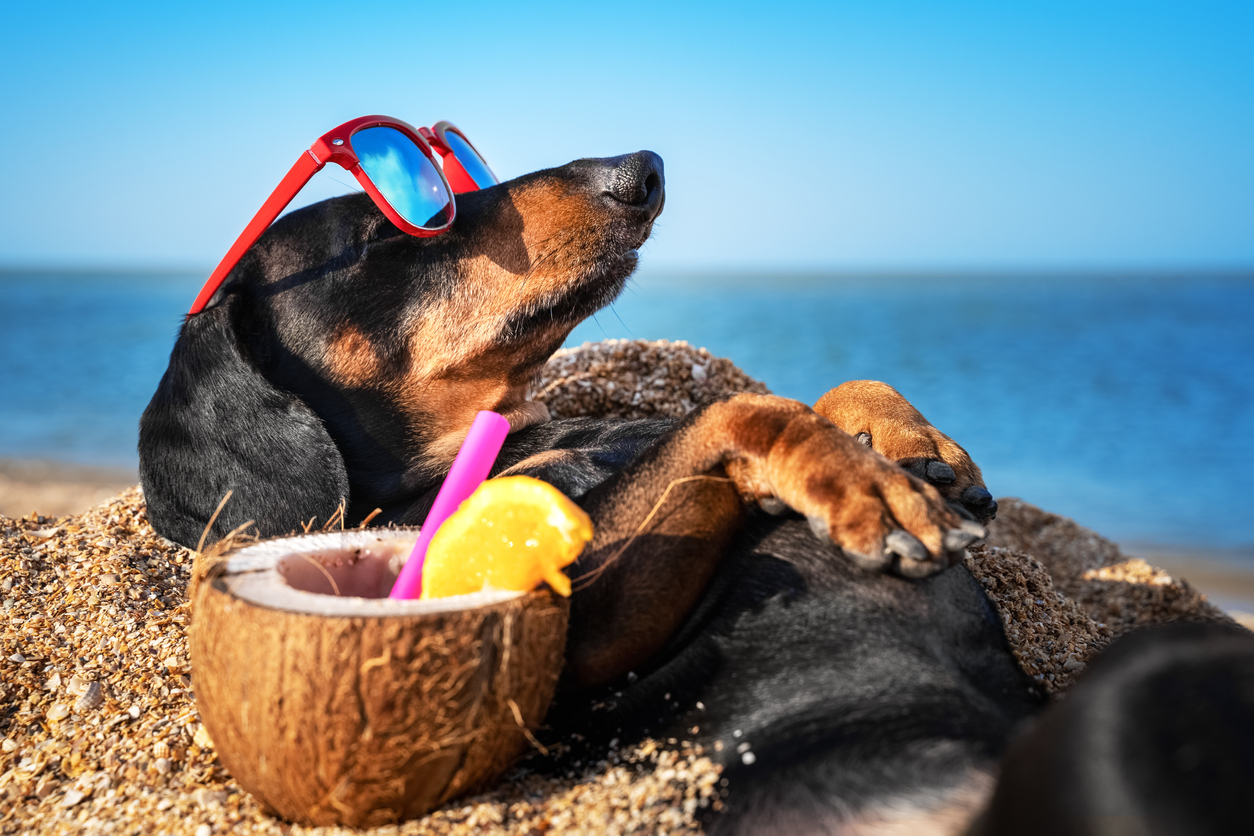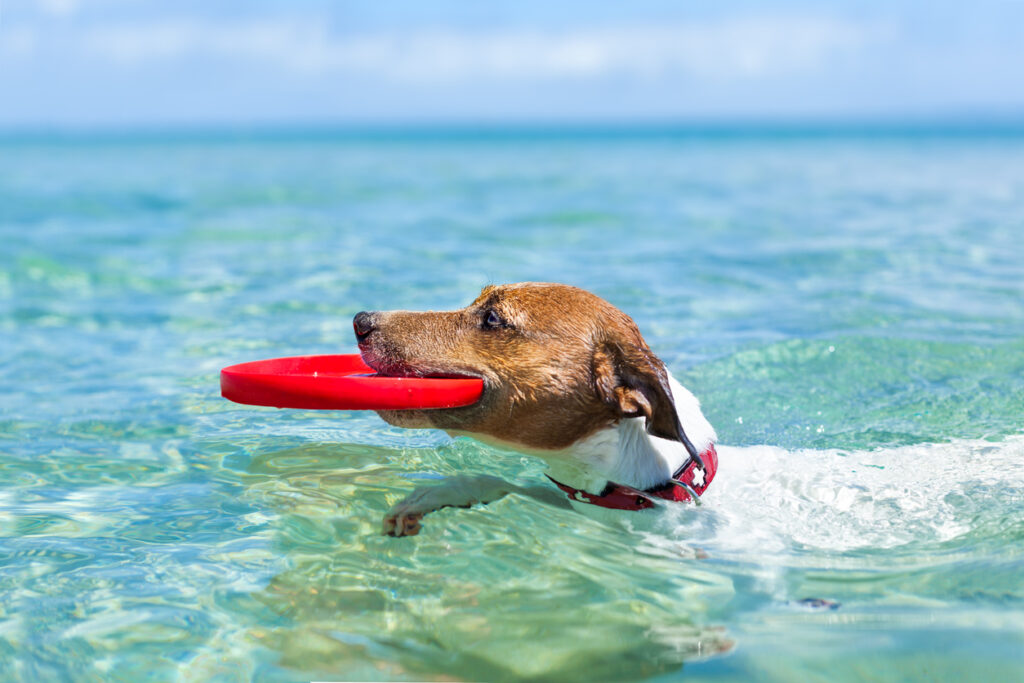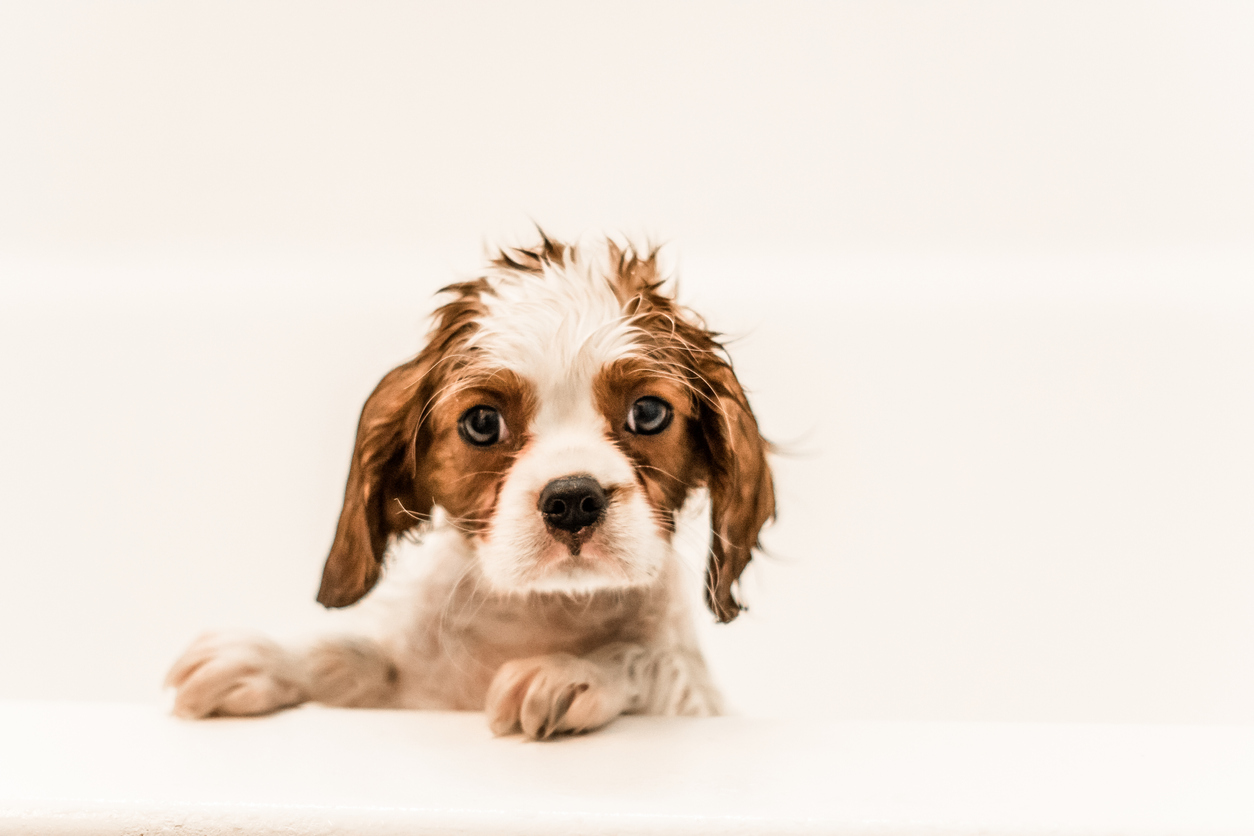Take Care of Your Dog in Summer

The Australian summer – it really is the most wonderful time of the year, bookending the festive season and holidays. The Aussie sun is harsh, and we all need protection from its dazzling glare, and that extends to our dogs. Read on to learn how to take care of your dog in summer.
UV Protection
Dogs exposed to the mid-summer sun need access to shade. A dog’s coat will naturally offer some sun protection, depending on its length. Short-hair dogs and those recently clipped short may need UV protection. Look for areas on their bodies with sparse hair and places you can see skin, like the belly, ears and nose; these areas need sunscreen. Try to find one made for dogs, or one that doesn’t contain zinc, which is toxic for them.
Like us, pale skin is at more risk of sunburn. Pop on a breathable cotton doggie t-shirt to shield them from the sun. Choose white or a light shade to deflect rather than absorb heat.
Take care of your dog in summer by avoiding a shave or buzz cut at the groomers. Rather, opt for a short cut that doesn’t leave skin exposed.
Hydration
As always, ensure your pup’s water bowl is continuously full of clean water. On outings, bring a water bowl along with you. Check your dog’s water bowl is full when you reach for your water bottle.
Heatstroke is a real risk for dogs in Australia. If your dog starts to drool and pant excessively and becomes unusually lethargic, seek help from your vet immediately. These are also symptoms of antifreeze ingestion.
Take care of your dog in summer by keeping them away from any wet patches that form under your car. It may be an antifreeze leak due to increased pressure or erosion. Antifreeze is poisonous, and swift action is required if your dog ingests it. The signs of antifreeze poisoning are vomiting, seizures, extreme thirst, lethargy, rapid heartbeat, weakness, diarrhoea, excessive drooling and uncoordinated or loss of control of body movement.

In the Car
In hot weather, pay special attention to your dog’s wellbeing. Ensure that the air conditioning reaches them. And whatever you do, don’t leave your dog in the car. In Australia, there are tough penalties for leaving a dog in the car on hot days. According to Drive, it is illegal to leave a dog alone in the car when it is 28 degrees or more. Dogs can ride on the back of a ute or trailer if they are in a cage or properly tied and secured, but not on a metal ute tray when it is 28 degrees or more.
On the topic of dogs in cars, it may be useful to know that driving with a dog on your lap, or for a dog to cause you to lose control of your car, is illegal. Penalties are in place in all states and territories. For instance, in NSW, you can be fined a minimum of $362 and lose three demerit points for driving with a dog on your lap. In VIC, the fine is anywhere from $277 to $961.55, and $335 in QLD.
All dogs behave differently. It is not compulsory but strongly advised to take care by restraining restless dogs in some kind of harness or cage. It is, however, lawful to have your dog sit or curl up in a passenger seat – as long as they stay put.
Paw Care
Dog paws are more sensitive than you may realise. Hot road surfaces can cause burns and blisters on paw pads. Before taking off on a walk, check that the surface isn’t too hot.
The RSPCA recommends the “five second rule” – feel the road with the back of your hand for a good five seconds to assess whether it is too hot for your dog. Road surface temperatures in the Australian summer exceed 60ºC.
Most Aussies know well the hot sand dance. Remember this at dog-friendly beaches and on sandy ground. Concrete also heats up considerably. Opt for grass and pathways in the shade.
The best time of day for walkies with your dog is in the early morning, before the sun has toasted the ground. Late evenings can be a safe time too.
Another option becoming increasingly popular is to protect your dog’s sensitive paws with footwear for dogs. These booties are also great for hiking and cold weather. Grippy socks are also on the market for pups that slide and skid around corners in the home.
Remember, too, that dog paws become soft in the water. If you plan to wash your dog, take them for a walk beforehand rather than after to prevent paw damage. Avoid walks immediately after a swim.
In the Water
If you want to take your best buddy for a dip for the first time, don’t assume that they know how to swim. Some dogs instinctually know how, particularly water dogs, such as Labradors or Newfoundlands. Proceed with caution, and like a child, keep your eye on them until you are confident they are safe and capable in the water. Swimming pools and dog-friendly beaches with low swell are best.
Out on the boat, your pup will need a life vest, even if they are strong swimmers.
Parasites and ID
Summer is peak flea and tick season. Check for fleas, and protect your dog from ticks. Avoid humid, bushy areas and long grass after rainfall. Double check your dog’s collar ID, and make sure your registration is up to date.
Summer in Australia is stunning, but sizzling. We need to protect our dogs from the heat. Keep this article handy to help you take care of your dog in summer.

